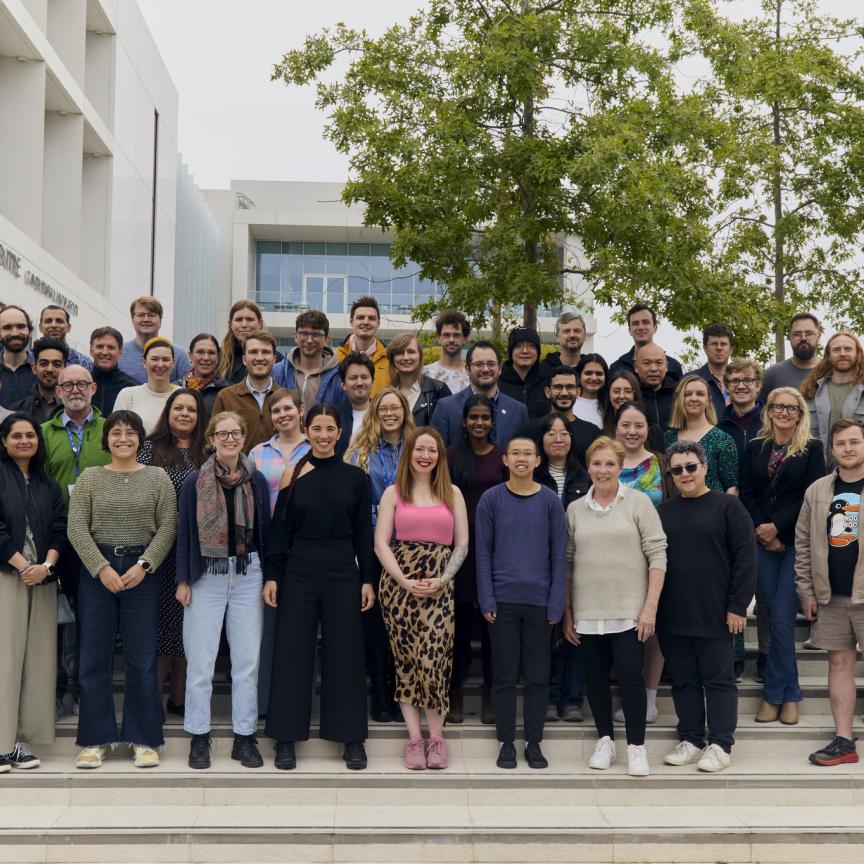Quantum science has prompted much excitement in recent years, promising benefits such as a scalable platform for communication and information processing tasks.
Much of the work in quantum photonics has historically been behind the scenes in research laboratories and academic institutions. But, there has been a huge amount of investment in recent years to help deploy quantum technology into commercial applications such as computing, communications and sensing.
The UK and Europe have large quantum funding programmes. The European Commission’s quantum flagship programme launched in 2018, with the commision promising to contribute €1bn of investment over 10 years. The UK’s national quantum technologies programme (NQTP) launched in 2014, and has already reached the £1bn investment milestone through joint government and industry funding.
Lynn Gladden, chair of the NQTP programme board, explained its strategic intentions: ‘Much has been achieved in the first five years of this pioneering programme due to excellent science, extraordinary collaboration and the dedicated UK community. But we must not lose sight of the fact that the science is far from done and significant engineering challenges remain. We must continue to build on our efforts, rather than lose momentum to provide continuity in these challenging times and help the sector to reach its full potential.’
Perfect 10
In line with this, the UK has seen the launch of its largest quantum computing programme to date: the Discovery project. This was launched by a collaboration of nine UK quantum industry organisations and represents a £10m research programme to address the current barriers to commercial quantum computing.
Photonics and quantum systems supplier M Squared is co-ordinating the project alongside partner organisations Oxford Ionics, ORCA Computing, Kelvin Nanotechnology and TMD Technologies, and academic institutes including Glasgow, Strathclyde and Oxford universities, as well as the National Physical Laboratory (NPL).
Graeme Malcolm, M Squared CEO and founder, explained: ‘Cross-sector investment is proving critical for progressing the UK’s quantum computing capabilities. Innovation is a journey and we are on a collective mission to help tackle the world’s most pressing problems, from climate change to healthcare. Together we are commercialising novel science. Innovation and the development of new technology is central to our approach.’
At present, the consortium believes that there are several viable approaches to commercialising quantum computing. The project will specifically address three methods enabled by photonics: neutral atom, ion trap and optical qubits. These approaches represent the state-of-the-art in demonstrated hardware; however, the consortium acknowledges that there are still a number of barriers to commercial deployment, such as the challenge of increasing both qubit fidelity and qubit scalability.
A commercial breakthrough
The programme is designed to demonstrate a shift from fundamental, academic activity to scalable, commercial implementations.
Malcolm explained: ‘The project will help the UK establish itself at the forefront of commercially viable photonics-enabled quantum-computing approaches. It will enable industry to capitalise on the government’s early investment into quantum technology and build on our strong academic heritage in photonics and quantum information. The coming era of quantum technology will play a major, transformative role in both the economy and society alike.’
So, what could this role look like? It is clear that ‘quantum’ is something of a buzzword, but what is it about this technology which, at its heart, harnesses the behaviour of tiny particles, that creates such excitement?
For Gladden, this is obvious: ‘These remarkable technologies,’ she said, ‘are an integral part of the UK’s future digital backbone and its manufacturing base that the nation requires, unlocking innovation across sectors to drive growth and help build a resilient, prosperous, secure nation.’
Malcolm is of a similar mind. ‘Quantum technology,’ he said, ‘has the potential to completely transform everything we do from a societal and scientific perspective. It could open up entirely new possibilities and ways of working.’
While he believes that we are beginning to see more commercial applications of this technology, the next stage in its development is to focus on scaling-up production and bringing it fully into the commercial arena.
Gravity check
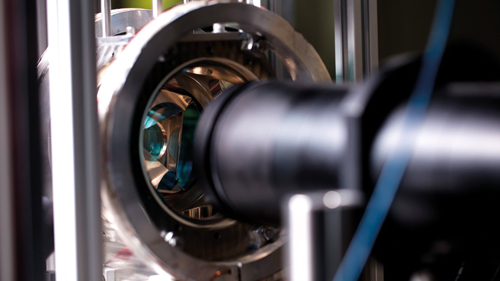
The quantum gravimeter, launched in 2017, could help pave the way for new applications
This is something that M Squared has been working toward, and has developed a number of devices for use in commercial applications. One of the first, in 2017, was its quantum gravimeter for the measurement of gravity. This, believes Malcolm, can help pave the way for new applications in many sectors.
The project was co-funded by Innovate UK under the NQTP programme, and the company worked with Professor Kai Bongs’ group at the University of Birmingham.
Malcolm explained: ‘A quantum gravimeter can detect and measure atomic interference, a manifestation of wave-particle duality that matter can display when it is in a quantum state at temperatures just above absolute zero. It uses quantum technology to bring precision to gravitational measurements and the detection of gravitational fields of hidden objects.’
Among the economic, social and environmental benefits that such a device could bring in the future, Malcolm envisages applications in several sectors ‘from the detection of new oil and gas deposits, surveying unknown underground infrastructures such as pipes and cables, even monitoring the water table,’ he said. ‘If we can transfer the technology into accurate seismic mapping, it could be used to predict natural disasters, from avalanches and volcanic eruptions to tsunamis.’
In 2018 the company developed what it believes was the UK’s first quantum accelerometer for navigation, alongside a team from Imperial College London.
This is a self-contained navigation system which sends and receives signals from satellites orbiting the Earth. It does not rely on any external signals such as global navigation satellite systems (GNSS), including GPS.
Lighting the way
Malcolm sees this as important because satellite signals can become unavailable if there are blockages from tall buildings. Systems relying on GNSS can also be jammed, imitated or denied – preventing accurate navigation. The new system uses quantum mechanics to describe how the atoms move when they are ultra-cold. As the atoms fall, their wave properties are affected by the acceleration of the vehicle. Using an ‘optical ruler’, the accelerometer is able to measure these minute changes very accurately. To make the atoms cold enough, and to probe their properties as they respond to acceleration, very powerful lasers that can be precisely controlled are required.
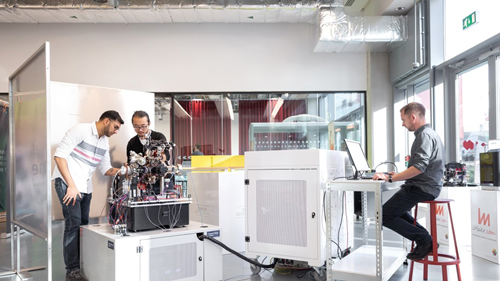
Using an ‘optical ruler’, the accelerometer is able to measure minute changes very accurately
Meanwhile, the company’s strontium lattice clock was designed to create the world’s first commercially available and fully integrated optical frequency atomic clock. It is designed to be compact, transportable, easy to use and based on optical lattice technology. It will achieve frequency uncertainties below 10-17, which is considered to be a level unprecedented on the global market.
Some other projects have already been brought to market via the NQTP’s Quantum Enhanced Imaging Hub. These include a correlated photon pair source and a photon counting camera for use in research activities; fluorescence imaging technology of molecular processes with impact on medical research; and a gas sensing lidar for fast and accurate leak detection.
Malcolm said: ‘Introducing devices such as these to the commercial market is a significant step towards bringing quantum technology into the real world. The huge promises of quantum technologies are already starting to become tangible.’
Halfway there
Quantum technology work has also continued at pace, with the European Commission’s quantum flagship programme now at the mid-point of its ‘ramp-up’ phase. The programme has amassed a number of projects using quantum technology in different applications.
There are currently four projects in the field of communications, with the Civiq project focusing on telecommunications. Specifically, on cost-efficient, high-integration and high-performance quantum communication technologies to deploy continuous-variable quantum key distribution (QKD) into the optical telecommunication network infrastructure.
Civiq gained funding from the European Union’s Horizon 2020 research and innovation programme, and brings together 21 partners, including those from major telecoms, integrators and developers of QKD.
Photonic integration circuits (PICs) are becoming more widely viewed as a key technology for this work. Recently, Spanish SME fabless company and project partner, VLC Photonics (now part of Hitachi High Tech), designed an Indium Phosphide photonic integrated circuit (PIC) specifically for secure quantum communications in the network.
Tip the scales
As in the UK, reaching scale economies is a key ingredient when it comes to meeting the growing demands for quantum applications. Therefore, exploiting semiconductor photonic integration technologies could help to bring strategic opportunities for chip-scale module fabrication, as well as supporting design innovation.
VLC Photonics is actively involved in the Civiq project, facilitating the transformation of a fairly bulky optical system that was developed in a laboratory into a PIC layout. This is specifically in a standard 4x6mm² cell-size, in order to be flexible enough to satisfy the different requirements from QKD system partners. The chips can then be fabricated through a JePPIX multi-project wafer of the InP foundry of Fraunhofer HHI, another partner of the project.
The first generation of continuous-variable QKD transmitter was devised by system partners Instituto de Ciencias Fotónicas (ICFO), Centre National de la Recherche Scientifique (CNRS), Max Planck Institute for the Science of Light (MPL), Technical University of Denmark (DTU) and Huawei Technologies, together with Fraunhofer and VLC.
It consists of a low-linewidth laser and the modulator PIC, which includes a high extinction electro-absorption modulator, an IQ modulation scheme and a variable optical attenuator. The compact design provides a compromise between system complexity, redundant optical paths for monitoring the performance and electrical paths distribution for driving the components.
After VLC has provided the chip design and Fraunhofer has fabricated it, the modulation system of the transmitter will be characterised by VLC, ICFO and CNRS to consider its functionalities as an independent component device.
The next stage will see the integrated narrow linewidth laser, currently being developed by Fraunhofer, integrated in the transmitter. It can then be used in continuous-variable QKD systems developed within Civiq to meet network security demands.
In other news
Other communications projects under the flagship programme have achieved breakthroughs towards high efficiency and multiplexed quantum memory technologies, enabling the storage of quantum information, quantum money, QKD, digital signatures and secure quantum cloud computing. They have specified, modelled and validated construction technologies for three different types of quantum random number generation, and they have developed advanced components systems for quantum communication for use in several different areas, including QKD and quantum networks.
There has also been a great deal of work on quantum in the fields of sensing and metrology, with four current projects taking place. One of these has already helped towards the development of quantum sensors based on NV-diamond centres, for applications such as in the automotive industry, and medical instrumentation (Asteriqs). Another project has made advances in quantum metrology and sensing through microelectromechanical systems (MEMS) technology using five different types of sensors, as well as innovative integration and packaging technologies (Macqsimal).
A third project has achieved homogeneous layers of ultra-shallow NV centres to build sensors that will enable much safer and more accurate medical imaging (Metaboliqs). The fourth has made progress toward the next generation of extremely accurate integrated and compact optical quantum clocks (Iqclock).
A further 12 projects are currently under way, spanning the fields of computing, simulation, basic science and co-ordination of flagship activities.
Fibre lasers help manipulate atoms to make quantum inertial sensors
The gradiometer team at the University of Birmingham have developed the World’s most portable quantum gravity gradiometer, with NKT Photonics’ Koheras fibre lasers one of the keys to success when making these compact quantum instruments
The progress made in atom manipulation over the last two decades has allowed researchers to use the quantum properties of matter to make accurate inertial sensors. The best sensitivity in absolute gravimetry comes from quantum sensors, which joins the clocks for accurate measurements given by quantum instruments. Other types of quantum sensors make highly accurate measurements such as rotation, acceleration, magnetic field, or light.
Quantum instruments are built according to the recipe: a sensor head, where the atoms are kept in an ultra-high vacuum environment to be interrogated; magnetic field environment, made of coils and magnetic shields to control the magnetic field applied on the atoms; a laser system, to cool and manipulate the atoms through the different steps; a microwave chain, to generate the frequencies required for the laser system; and a controller, to define the sequence and collect the data.
Using quantum gravity gradiometers to measure density fluctuations
Gravity gradiometers are used to map the underground density anomaly by measuring the gradient of gravity, which gives the same information as gravity with less signal at long distances but more sensitivity to density fluctuations.
To do so, the vertical acceleration of two spatially separated clouds of cold atoms are put in a quantum superposition and recombined by the same interrogation laser. This allows the suppression of common-mode noise between the two clouds, which allows gradiometers to perform measurements in noisy environments such as onboard vehicles.
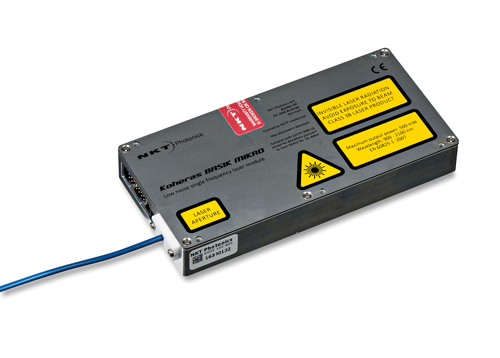
BasiK MIKRO
The quantum gravity gradiometer is the preferred choice for industrial transfer because quantum instruments demonstrate high performance and common-mode suppressed gradiometers can perform measurements in different environments.
The University of Birmingham leads the UK Quantum Technology Hub for Sensors and Timing and has developed 79 collaborative projects with the industry. One of the major goals is to develop compact field quantum gravity gradiometers with a technology readiness suitable for industrial development.
Atom interferometry requires fast frequency modulation, a narrow linewidth, and low noise
The quantum gravity gradiometer of the University of Birmingham is based on cooled Rubidium-87 atoms. A cloud consisting of 108 atoms is cooled and trapped by laser beams. The cloud is cooled through different steps, first via magneto-optical trapping, then by performing optical molasses to reach 4 µK. To cool the atoms, the laser frequency is red-detuned from the atomic transition.
For interrogation, vertically aligned laser beams put the atoms into a quantum superposition state. Then, after an evolution time, they are recombined by laser pulses (of a few µs).
The output state of the interferometer, read by fluorescence, depends on the ability of the laser frequency chirp to compensate for the changing Doppler shift induced by the acceleration of the atoms in freefall.
As the laser frequency must be kept stable, the laser seed is (text removed) locked to a rubidium transition using a spectroscopy cell. The laser intensity, the laser linewidth, and the laser frequency directly impact the interferometer phase, so the laser system needs to be as good as possible in order not to add extra noise. The University of Birmingham partnered with Photonic Solutions in the UK to supply NKT Photonics’ Koheras BasiK E15 fiber laser as the laser seed for their interferometer. The fast frequency modulation of up to 8GHz, sub kHz linewidth and low phase and relative intensity noise characteristics of the laser were all critical to the performance of the of the interferometer. The instrument requires a fast frequency modulation (100 MHz in 1 ms) and a narrow linewidth (1 kHz). Moreover, the polarisation extinction ratio must be high, as the atomic transition efficiency depends on the polarisation. Another driving force in the design of the instrument was portability and the telecom technology of the Koheras BASIK E15 and the 2 W Koheras BOOSTIK amplifier module allow for a compact, robust, and transportable instrument.
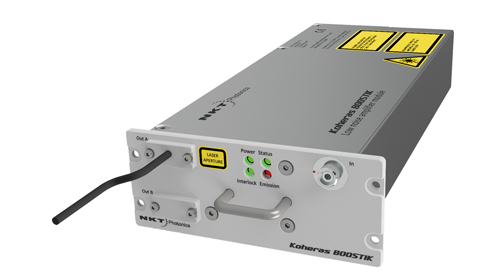
BoostiK linecard
The University of Birmingham are also using more recent cold atoms tools, such as moving lattices. They are investigating how best to interrogate atoms with a large momentum transfer, e.g. using the high-power frequency-doubled laser system Koheras HARMONIK.
Compact systems enable more applications
The current field gradiometer from the University of Birmingham is the world’s most portable quantum gravity gradiometer, designed to detect under-surface. This instrument shows a useful application for civil engineering for non-destructive underground mapping. It is already in industrial transfer process with the UK


